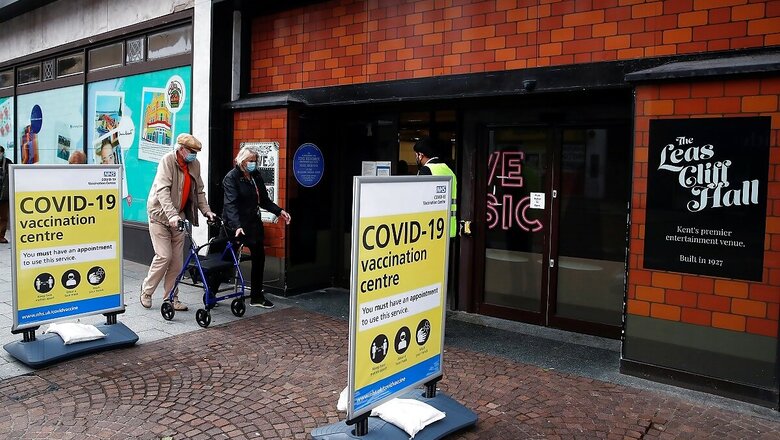
views
This week Britain passed the grim milestone of 1,00,000 Covid-19 deaths. That figure has been rising by more than a thousand a day for several days now. On Friday, the death toll stood at 1,03,126. To put that number into a better context for Indians reading this, if India’s death rate based on its population would have been similar to Britain’s, there would have been 2.2 million deaths in India by now. India’s actual death toll is about 1,54,000.
Till Friday, Britain had recorded 3.75 million Covid-positive cases. The Indian equivalence of that would have been 80 million cases, or roughly the entire populations of Punjab, Haryana, Delhi, Himachal and Jammu and Kashmir.
So what went wrong in Britain? Just about everything that a government could do wrong, the British government did, all of last year. The year is dotted with milestones signposting the wrong way – all leading to the big milestone passed this week.
It was at the end of January last year that two Covid cases were first reported in Britain, after weeks of belief promoted by government ministers that Britain had little to worry about. Health Secretary Matt Hancock said Britain is “well prepared” to handle any incidence of coronavirus. He said the UK has developed a world leading test for the virus. But the officially perceived risk was raised from ‘very low’ to ‘low’.
Lethal Progress
On March 2, 40 cases were reported in a day. Two weeks later, 616. The numbers suggested by the supposedly world leading test were wildly short of the actual incidence. The virus was at the time ripping through Britain. The world leading test may itself have been world leading, but it wasn’t being conducted.
From about March 10, demands for a lockdown began to grow. Prime Minister Boris Johnson said it would be considered at the “right time” when that time was passing, and being lost, by the day. The chief scientific officer Sir Patrick Vallance announced that a lockdown was not being rushed because it leads to fatigue with it. It became clear only later that fatigue later was preferable to deaths now.
The UK government eventually imposed a lockdown only on March 23, by which time the virus was killing people all over, particularly in care homes. Past that peak of deaths, Boris Johnson ordered a world beating test and trace system. It didn’t work, the government acknowledged within weeks that it was not working as expected, and certainly as announced.
Eat Out
Over the summer, the lockdown was eased and cases came under control. That’s when the government began to encourage people to go out and mix. It ordered an ‘eat out to help out’ scheme under which it paid restaurants 1.5 billion pounds to serve people at half price up to a point. This was Chancellor of the Exchequer Rishi Sunak’s brainchild. Soon after this scheme – and the gathering of people for long stretches in confined space that this had to bring – cases began to rise again.
In October, the government introduced limited restrictions in regional tiers. Again, this was far too slow a response when leading independent scientists were demanding a new lockdown. That did follow eventually and this time feebly. The opposition Labour Party called it yet another instance of the government’s Covid policy of ‘too little too late’.
In December, cases began skyrocketing, fed by a new strain that has become notorious as the UK strain. By mid-December, the health secretary and London mayor Sadiq Khan were both saying that the spread of the virus was now “out of control”.
And yet the government did not impose a lockdown, only regionally tiered measures that were never going to halt its advance. On Christmas day, movement of people was still allowed in several areas despite sharp warnings from health institutions. The number of cases snowballed after Christmas. It was only on January 4 that a lockdown, the third, was announced.
This new lockdown will last at least until the middle of February, and almost certainly longer. Schools will not reopen at least until March 8, and again very likely not even on that date. This time, finally, the government is being careful.
Right at Last
What the UK has got right, and far ahead of others, is foresight in pre-ordering vaccines from several institutions and companies – the government has ordered close to 400 million doses for a population of 65 million.
Enough stock has arrived for rapid distribution and inoculation currently at 200 shots a minute on average. Boris Johnson is counting on these last decisions to put Britain ahead, not behind. But he will forever carry the legacy of tens of thousands of deaths that could have been avoided had his government done better and faster.
Read all the Latest News, Breaking News and Coronavirus News here




















Comments
0 comment